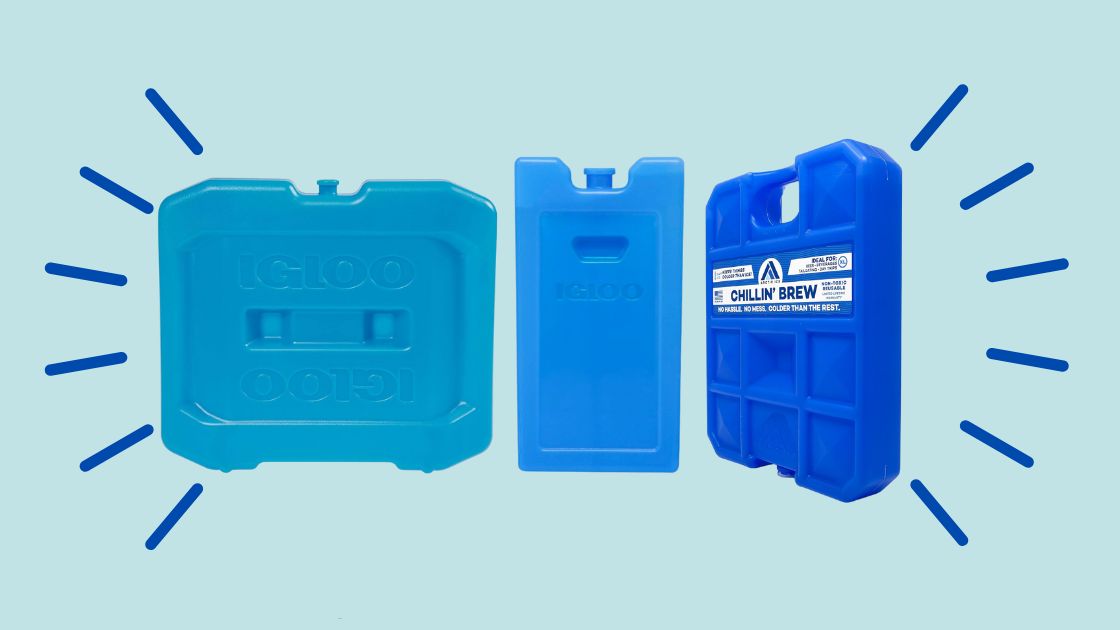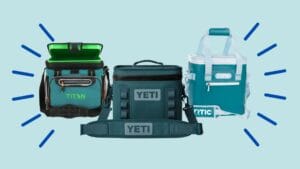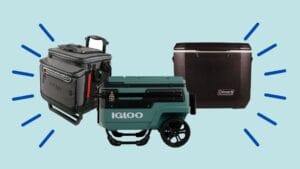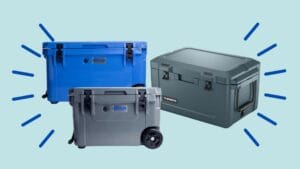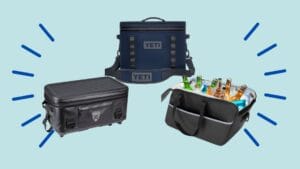How Long Freezer Packs Keep Food Cold?
When it comes to transporting perishable food items, keeping them cold and fresh is a top priority. One summer, my family and I embarked on a road trip to visit relatives in another state. As we packed the cooler with sandwiches, fruits, and drinks, we knew we needed a reliable solution to keep everything cool during the long journey.
We opted for freezer packs, hoping they would be sufficient to maintain the desired temperature. We carefully arranged the food, placing the freezer packs strategically in the cooler to ensure even cooling. Little did we know at the time, the duration for which the freezer packs could keep the food cold would greatly impact the freshness and safety of our meals.
Throughout the trip, we diligently monitored the temperature of the cooler, concerned about our food’s well-being. It was a constant battle with the hot summer weather, opening the cooler now and then to grab a cold drink and inadvertently letting precious cold air escape.
By the time we arrived at our destination, we were relieved to find that our food was still cold and fresh. The freezer packs had done their job, but we couldn’t help but wonder: How long did they actually keep our food cold? And could we have maximized their cooling efficiency even further?
If you’ve ever wondered about these questions or want to ensure your food stays cold for the desired duration, then you must read this. We’ll explore the different types of freezer packs available, their lifespan, factors that influence their effectiveness, and tips on maximizing their cooling efficiency. With these tricks up your sleeve, you’ll be equipped to make informed decisions when selecting freezer packs and ensure that your food stays cold for as long as you need.
How Long Freezer Packs Keep Food Cold Key Takeaways:
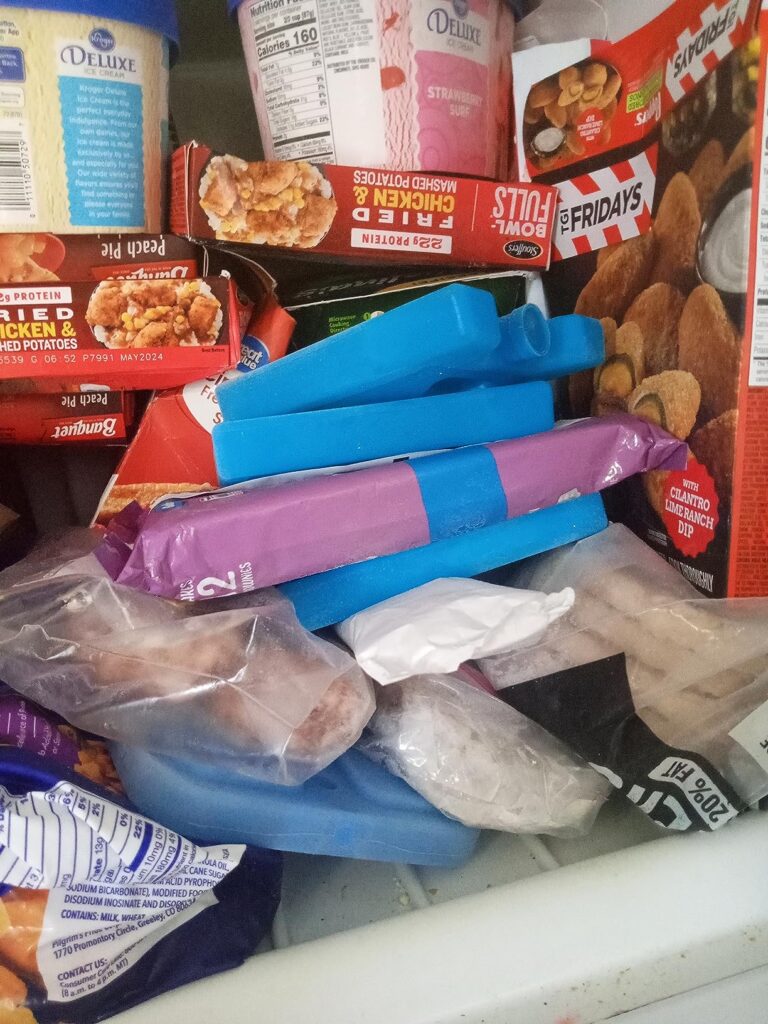
- Freezer packs are essential for keeping perishable food items cold during transportation.
- The duration for which freezer packs can maintain coldness varies depending on several factors.
- Understanding the different types of freezer packs and their lifespan can help you make the right choice.
- Factors like insulation, external temperature, and the size of the ice pack can influence effectiveness.
- Maximizing cooling efficiency involves strategic pack placement and selecting the right pack for your needs.
Understanding Freezer Pack Types and Their Lifespans
In order to choose the right freezer pack for your needs, it’s important to understand the different types available and their respective lifespans. From versatile and reusable gel ice packs to long-lasting and mess-free dry ice packs, each type offers unique characteristics that cater to specific cooling requirements. Let’s explore the various freezer pack types in detail:
Gel Ice Packs: Versatile and Reusable
Gel ice packs are a popular choice when it comes to cooling perishable items. They are versatile and can be used in various applications, such as food transportation and medical purposes. Gel ice packs are reusable, which makes them a cost-effective option in the long run. They can maintain a consistent temperature for a moderate duration, depending on the size and insulation of the pack.
Instant Cold Packs: Immediate but Short-Term Cooling
If you require immediate cooling for a short period, instant cold packs are the ideal choice. These packs contain chemicals that, when activated, produce instant cold temperatures. However, the duration of cooling is relatively short-lived compared to other freezer pack types. Instant cold packs are commonly used for first aid purposes or quick relief from minor injuries and inflammation.
Homemade Ice Packs: Customizable and Budget-Friendly
For those looking for a budget-friendly cooling option or in case of emergencies, homemade ice packs are a convenient choice. These packs can be easily created using common household items such as ziplock bags and water. Homemade ice packs offer the advantage of customization, allowing you to adjust the size and shape based on your specific needs. However, their lifespan may be shorter compared to commercially available freezer packs.
Dry Ice Packs: Long-Lasting and Mess-Free Refrigeration
Dry ice packs offer the advantage of long-lasting and mess-free refrigeration. Made from solid carbon dioxide, these packs can maintain extremely low temperatures for an extended duration. Dry ice packs are commonly used for preserving perishable items during long journeys or for storing temperature-sensitive products. It’s important to handle dry ice with caution, as direct contact with the skin can cause burns.
Factors Influencing the Effectiveness of Freezer Packs
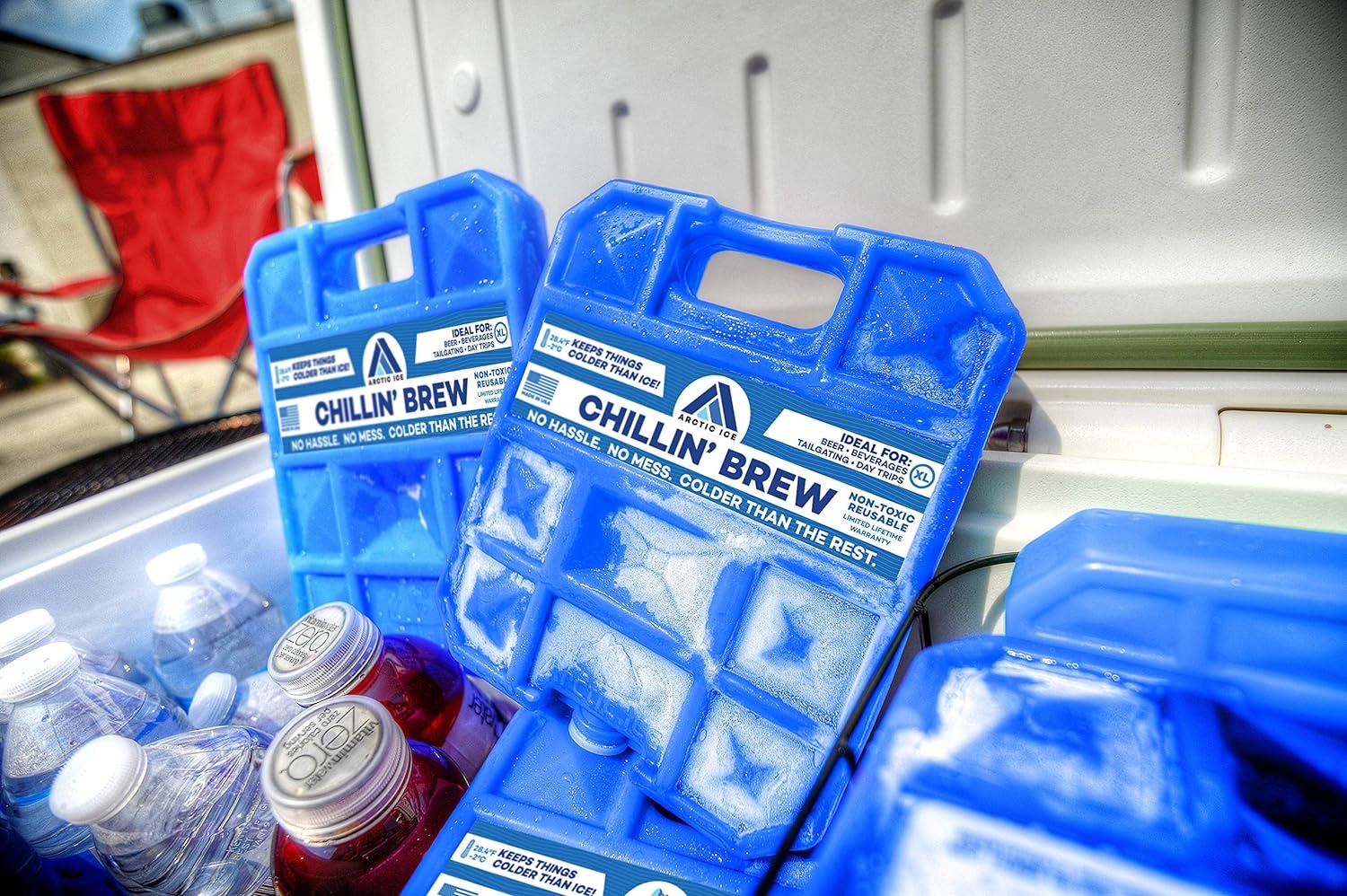
When it comes to keeping your food cold during transportation, the effectiveness of freezer packs plays a crucial role. Several factors can impact the performance and cooling efficiency of these packs, ensuring that your food stays fresh for as long as possible. Understanding these factors will enable you to maximize the effectiveness of your freezer packs and ensure optimal cooling duration.
Here are some key factors that can influence the effectiveness of freezer packs:
- Insulation Quality: The quality of insulation material used in the freezer pack directly impacts its ability to maintain the cold temperature. High-quality insulation ensures better heat retention and longer cooling duration.
- External Temperature: The external temperature in which the freezer pack is exposed to can significantly affect its cooling efficiency. Higher ambient temperatures can accelerate the melting process and decrease the duration of coldness.
- Frequency of Opening the Container: Opening the container frequently can cause warm air to enter, reducing the effectiveness of the freezer pack. Limiting the number of times the container is opened helps in maintaining the desired temperature.
- Size and Shape of the Ice Pack: The size and shape of the ice pack can influence its cooling capacity. Larger ice packs have more surface area for heat exchange, providing better cooling efficiency. Additionally, the shape of the ice pack should be optimized to fit the container and distribute the cold evenly.
- Durability of Freezer Packs: The durability of freezer packs impacts their overall performance and longevity. High-quality freezer packs are designed to withstand multiple uses without compromising their cooling effectiveness.
- External Factors Affecting Cooling Duration: Other external factors, such as the insulation quality of the container, ambient humidity, and the type of food packaging used, can also affect the cooling duration of freezer packs. Proper packaging and insulation of the food items can enhance the overall cooling efficiency.
By considering these factors and taking necessary precautions, you can maximize the effectiveness of your freezer packs and ensure that your food remains cold and fresh throughout its journey.
| Factor | Impact |
|---|---|
| Insulation Quality | Affects heat retention and cooling duration |
| External Temperature | Higher temperatures accelerate melting and decrease cooling efficiency |
| Frequency of Opening the Container | Opening the container frequently disrupts the cooling process |
| Size and Shape of the Ice Pack | Larger ice packs with optimized shape provide better cooling efficiency |
| Durability of Freezer Packs | High-quality freezer packs offer extended cooling performance |
| External Factors Affecting Cooling Duration | Container insulation, ambient humidity, and food packaging influence cooling efficiency |
How Long Do Freezer Packs Keep Food Cold: Analyzing Duration Capabilities
The effectiveness of freezer packs in keeping food cold can vary depending on several factors. Understanding the duration capabilities of different freezer pack types is crucial in estimating their cooling capabilities and determining how long your food will stay cold during transportation.
The duration of freezer pack cooling is influenced by various factors:
- Type of Freezer Pack: Different types of freezer packs have varying cooling durations. Gel ice packs, instant cold packs, homemade ice packs, and dry ice packs each offer different durations for keeping food cold.
- External Temperature: The external temperature can impact the rate at which freezer packs cool and maintain coldness. Higher temperatures may reduce the effectiveness and duration of freezer packs.
- Insulation: The quality of insulation surrounding the freezer packs can affect their cooling capabilities. Good insulation helps retain coldness for longer durations.
- Food Packaging: The way food is packaged can also impact the cooling duration. Properly sealed and insulated packaging can help preserve the coldness provided by freezer packs.
It is important to note that these factors can interact with each other and influence the overall effectiveness of freezer packs in keeping food cold.
To estimate the duration capabilities of different freezer pack types, it is advisable to refer to manufacturer specifications and guidelines. Conducting tests by using the freezer packs in real-life scenarios can also provide insights into their cooling capabilities.
| Freezer Pack Type | Maximum Cooling Duration |
|---|---|
| Gel Ice Packs | 4-8 hours |
| Instant Cold Packs | 1-2 hours |
| Homemade Ice Packs | 2-4 hours |
| Dry Ice Packs | Up to 24 hours |
It is important to consider these estimated durations as general guidelines. Actual cooling durations can vary depending on factors such as external temperature, insulation quality, and packaging.
Maximizing Cooling Efficiency with the Right Freezer Pack Selection
Choosing the right freezer pack is crucial for optimizing cooling efficiency during food transportation. One popular option for extended refrigeration is dry ice packs. These packs offer several benefits, including:
- Extended Refrigeration Duration: Dry ice packs can keep food cold for extended periods, making them ideal for long journeys or when temperatures are high.
- Mess-Free Use: Dry ice packs do not melt into liquid, eliminating the need for draining or cleaning after use.
- Preservation of Food Quality: The extremely low temperature of dry ice helps maintain the freshness and quality of perishable items.
- No Silution of Food: Unlike gel or instant cold packs that may leak and dampen the food, dry ice packs keep food dry.
However, when selecting a freezer pack, it’s crucial to consider the trade-offs between pack size and available space. While larger packs may provide greater cooling capacity, they can reduce the available space for food storage. On the other hand, space-saving freezer packs allow for more food storage but may compromise on cooling efficiency.
To optimize cooling efficiency and storage capacity, it’s essential to strike the right balance between pack size and available space. Consider your specific needs and the duration of refrigeration required to make the most efficient choice.
| Freezer Pack Size | Available Space for Food Storage | Cooling Efficiency |
|---|---|---|
| Large | Reduced | High |
| Medium | Moderate | Balanced |
| Small | Increased | Lower |
By selecting the right freezer pack size and considering the available space, you can optimize cooling efficiency while ensuring sufficient storage capacity for your food items.
The Science of Cooling: How Freezer Packs Maintain Their Temperature
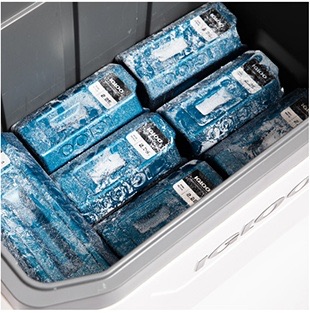
Freezer packs play a crucial role in keeping our food cold and fresh during transportation. But have you ever wondered how these packs maintain their temperature? It all comes down to the science of cooling. Today, we will explore the key factors that contribute to the effectiveness of freezer packs and how they manage to keep our food chilled.
The Role of Insulation in Enhancing Freezer Pack Longevity
Insulation is a critical component of freezer packs that helps enhance their longevity and cooling efficiency. Insulated materials, such as foam or gel, act as barriers to prevent heat transfer between the environment and the contents of the pack. By minimizing the exchange of heat, insulation helps to maintain a low temperature inside the pack, keeping the food cold for a longer period. The quality and thickness of the insulation material directly impact the pack’s ability to retain the cold temperature.
Understanding the Impact of Freezing Points on Cooling Duration
The freezing point of a substance refers to the temperature at which it changes from a liquid to a solid state. In the case of freezer packs, the freezing point of the gel or solution inside the pack determines its cooling duration. Freezer packs with lower freezing points tend to stay colder for a longer time. This is because their contents remain in a solid state at lower temperatures, providing more extended cooling. Understanding the freezing points of different freezer packs allows us to select the most suitable option based on our cooling requirements.
| Key Factors in Freezer Pack Performance |
|---|
| Insulation quality and thickness |
| Freezing point of the pack contents |
| Proper sealing to prevent heat exchange |
| Size and shape of the pack |
| External temperature and environmental conditions |
| Frequency of opening the container |
Optimizing the cooling mechanisms of freezer packs requires attention to these key factors. By considering insulation, freezing points, sealing, size, environmental conditions, and usage habits, we can maximize the performance and duration of our freezer packs, ensuring our food remains cold and fresh throughout its journey.
Tips for Longer Lasting Chill: Extending Freezer Pack Potency

When it comes to keeping your food cold during transportation, it’s essential to maximize the potency of your freezer packs. By following these tips, you can extend their cooling efficiency and ensure a longer-lasting chill for your perishable items.
Preparing Your Cooler to Maximize Cold Retention
One of the key factors in optimizing the effectiveness of freezer packs is preparing your cooler for better cooling. Here are some tips to enhance cold retention:
- Pre-chill Your Cooler: Before packing it with food and freezer packs, pre-chill your cooler by storing it in a cold environment or adding ice for a few hours. This helps to establish a lower initial temperature inside the cooler.
- Use Additional Insulation: Insulating your cooler with materials such as towels or blankets can provide extra thermal protection, reducing the temperature transfer between the contents and the surrounding environment.
Strategic Placement of Freezer Packs for Optimal Cold Distribution
The placement of your freezer packs within the cooler can significantly impact the distribution of coldness. Consider these strategies for optimal cold distribution:
- Create A Barrier: Place a layer of non-perishable items, such as cans or unopened packages, between the freezer packs and the perishable food. This creates a barrier that helps maintain more consistent cold temperatures throughout the cooler.
- Strategic Positioning: Position the freezer packs in the center and towards the top of the cooler. This ensures that the cold air circulates more evenly and reaches all parts of the cooler, keeping the food uniformly chilled.
By implementing these tips, you can maximize the potency of your freezer packs and prolong the coldness of your food during transportation. Enjoy longer-lasting chill and the peace of mind that your perishable items stay fresh and safe.
Popular Freezer Pack Options and Their Cooling Durations
When it comes to choosing freezer packs, there are several popular options available on the market, each with their own unique features and cooling durations. Let’s take a closer look at three renowned freezer pack brands – the Arctic Ice Chillin’ Brew Series, Cooler Shock, and YETI Ice Packs.
The Reliability and Structure of Arctic Ice Chillin’ Brew Series

The Arctic Ice Chillin’ Brew Series is well-known for its exceptional reliability and innovative structure. These freezer packs are designed to provide long-lasting cooling, allowing your food to stay cold for extended periods. With their durable construction, they can withstand rugged conditions and maintain their effectiveness even in high temperatures. If you’re looking for a freezer pack that can deliver reliable cooling durations, the Arctic Ice Chillin’ Brew Series is a top choice.
Cooler Shock’s Versatility with Reusable Ice Pack Varieties
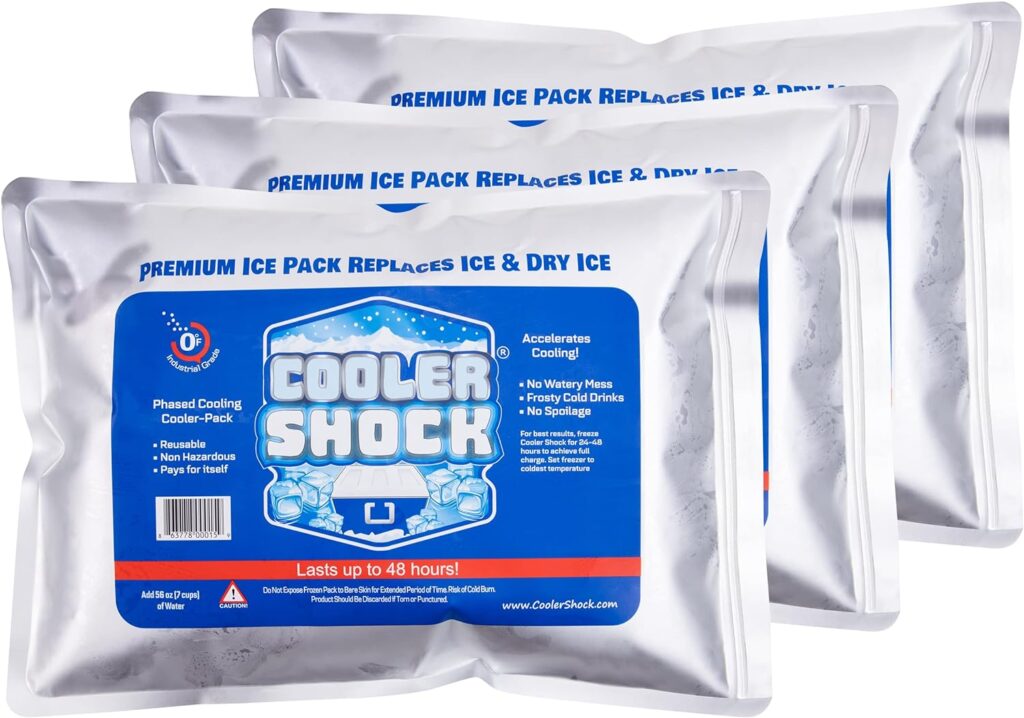
Cooler Shock offers a wide range of reusable ice pack varieties that are highly versatile. These ice packs are specially designed to provide long-lasting cooling and can be easily recharged. They function by absorbing heat from your food and releasing it slowly, ensuring that your items stay cold for an extended period. With their reusable nature, Cooler Shock ice packs are not only cost-effective but also environmentally friendly. Whether you’re going on a picnic or a camping trip, Cooler Shock ice packs offer reliable cooling power.
YETI Ice Packs: Durability Meets Rapid Cooling

YETI Ice Packs are renowned for their exceptional durability and rapid cooling capabilities. These freezer packs are built to withstand the toughest conditions, making them ideal for outdoor adventures and long journeys. YETI Ice Packs utilize a unique gel formula that allows for quick and efficient cooling. They can maintain low temperatures for an extended period, ensuring that your food stays fresh and cold. If you’re looking for a freezer pack that combines durability and rapid cooling, YETI Ice Packs are an excellent choice.
Maintaining and Storing Freezer Packs for Repeated Use
Proper maintenance and storage are essential for ensuring the longevity and effectiveness of your freezer packs. By following these tips, you can maximize their cooling efficiency and reuse them for future needs.
Cleaning and Care
- After each use, clean the freezer packs with mild soap and warm water.
- Rinse thoroughly to remove any residue and ensure it is completely dry before storing.
- Avoid using harsh chemicals or abrasive materials that could damage the pack.
- Inspect the packs regularly for any signs of damage or leakage. Discard any packs that are compromised.
Storage Conditions
- Store the freezer packs in a cool, dry place away from direct sunlight.
- Keep the packs in an airtight bag or container to prevent them from absorbing any odors or contaminants.
- Avoid storing the packs near sharp objects or heavy items that could puncture or damage them.
- Ensure that the storage area is free from excessive moisture or humidity, as it can affect the packs’ performance.
Freezer Pack Longevity
- Rotate the freezer packs regularly to evenly distribute their usage and prevent wear and tear on specific packs.
- Consider labeling the packs with the date of purchase or first use to keep track of their lifespan.
- If using multiple packs, place them in separate compartments or stack them with a layer of insulation in between to maximize their cooling efficiency.
- When necessary, replenish your freezer pack collection to ensure you always have enough packs for your cooling needs.
By following these maintenance and storage tips, you can prolong the lifespan of your freezer packs and maintain their cooling efficiency for extended use. Proper care and attention will help ensure that your freezer packs are always ready to keep your food cold and fresh.
How Long Freezer Packs Keep Food Cold – Practical Insights: Real-Life Applications of Freezer Packs

Freezer packs are more than just a convenient way to keep your food cold during transportation. They have practical applications that can make a real difference in various real-life scenarios, ensuring your food stays safe, fresh, and at the desired temperature when you need it the most.
Keeping Food Safe and Fresh on Long Journeys
Whether you’re embarking on a road trip, going camping, or traveling long distances, freezer packs are your perfect companions to keep perishable items protected. By placing freezer packs alongside your food, you can create a cold environment that preserves its freshness and prevents spoilage throughout the journey. So, say goodbye to worrying about spoilage and hello to enjoying delicious meals wherever your adventures take you.
Ensuring Effective Cooling during Outdoor Events and Picnics
Outdoor events and picnics are the perfect opportunities to enjoy the great outdoors while indulging in tasty treats. However, the hot weather can often sabotage your food, leading to potential foodborne illnesses. That’s where freezer packs come to the rescue! By placing freezer packs in your cooler or picnic basket, you can keep your food at a safe and cool temperature, ensuring that it remains fresh and free from any harmful bacteria. So, go ahead and enjoy your time outside without compromising on food safety.
Whether you’re embarking on a long journey or enjoying an outdoor event, freezer packs have practical uses that go beyond mere convenience. They are essential tools for keeping your food safe, fresh, and at the right temperature. So, make sure to stock up on freezer packs and experience worry-free adventures with every bite.
FAQ
Q: How long do freezer packs keep food cold?
A: The duration for which freezer packs can keep food cold varies based on several factors, including the type of freezer pack, external temperature, insulation, and food packaging. Gel ice packs, instant cold packs, homemade ice packs, and dry ice packs all have different durations. By analyzing the lifespan of freezer packs, you can estimate their cooling capabilities and determine how long your food will stay cold during transportation.
Q: What factors influence the effectiveness of freezer packs?
A: Several factors can impact the effectiveness of freezer packs in keeping your food cold. Factors like insulation quality, external temperature, frequency of opening the container, size, and shape of the ice pack can all play a role. Understanding these factors can help you take steps to maximize the cooling efficiency of your freezer packs and ensure that your food stays cold for as long as possible.
Q: How long can freezer packs maintain food coldness?
A: The duration for which freezer packs can maintain food coldness varies depending on various factors, including the type of freezer pack, external temperature, insulation, and food packaging. By analyzing the lifespan of freezer packs, you can estimate their cooling capabilities and determine how long your food will stay cold during transportation.
Q: How do I select the right freezer pack for maximum cooling efficiency?
A: Choosing the right freezer pack is crucial for maximizing cooling efficiency. Dry ice packs offer benefits in terms of extended refrigeration and are ideal for long journeys or warm weather conditions. However, the size of the freezer pack can also impact the available space for food storage. Navigating the trade-offs between freezer pack size and available space is essential to ensure optimal cooling and storage capacity.
Q: How do freezer packs maintain their temperature?
A: Freezer packs work based on scientific principles that allow them to maintain a cold temperature. Insulation plays a vital role in enhancing the longevity of freezer packs by preventing heat transfer. Understanding the impact of freezing points on cooling duration is also essential for optimizing the performance of freezer packs.
Q: Are there any tips for maximizing the cooling efficiency of freezer packs?
A: Yes, there are various tips and techniques that can help extend the potency of freezer packs and maximize their cooling efficiency. Preparing your cooler to maximize cold retention, such as pre-chilling it and using additional insulation, can significantly enhance the effectiveness of freezer packs. Strategic placement of freezer packs within the cooler can also ensure optimal cold distribution.
Q: What are some popular freezer pack options with different cooling durations?
A: Several popular freezer pack options are available on the market, each with different cooling durations and features. The Arctic Ice Chillin’ Brew Series is known for its reliability and unique structure, while Cooler Shock offers versatile and reusable ice pack varieties. YETI Ice Packs are renowned for their durability and rapid cooling capabilities.
Q: How do I maintain and store freezer packs for repeated use?
A: Proper maintenance and storage of freezer packs are essential for their long-term usability and cooling efficiency. Cleaning procedures, storage conditions, and maximizing the longevity of freezer packs will be discussed to ensure that they remain in optimal condition for future use.
Q: What are the practical applications of freezer packs?
A: Freezer packs have practical applications in various real-life scenarios. They can help keep food safe and fresh during long journeys, ensuring that perishable items remain at the desired temperature. Freezer packs are also effective for cooling food during outdoor events and picnics, maintaining the freshness of food items.

